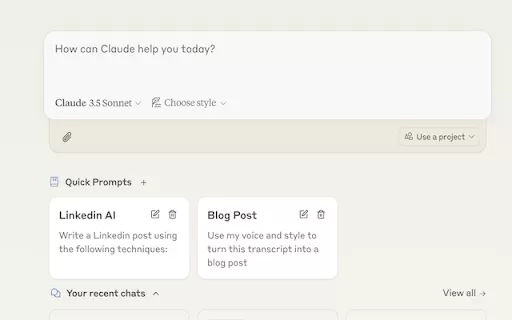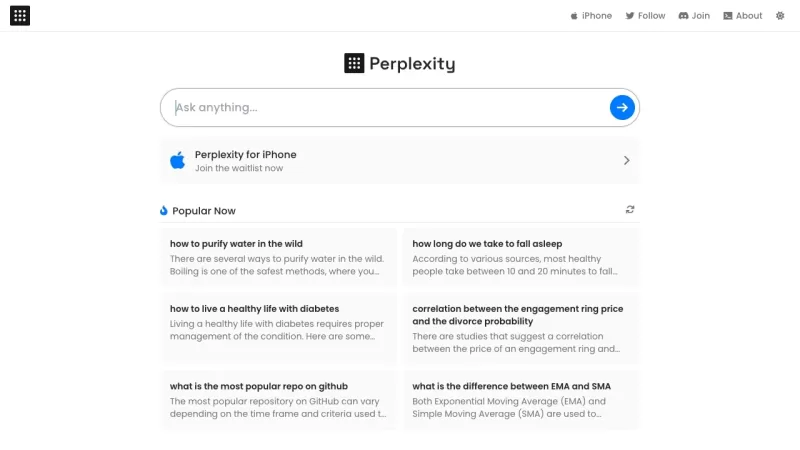Embracing Change and Unlocking Inner Power with 'Let It Go'

 April 30, 2025
April 30, 2025

 FrankGonzález
FrankGonzález

 0
0
In a world where conformity often feels like the default setting, the idea of embracing change and accepting oneself takes on a special significance. The song 'Let It Go' has struck a chord globally, serving as a powerful anthem for self-discovery and breaking free from the shackles of societal norms. By truly grasping its essence, we can tap into our inner strength and carve out a path to a more authentic, fulfilling existence. This piece explores the deep impact of 'Let It Go', providing practical advice on personal growth and embracing change.
Understanding the Essence of 'Let It Go'
What Does 'Let It Go' Really Mean?
At its heart, 'Let It Go' is all about freeing ourselves from the chains that bind us, both from the outside world and within. It's about letting go of the fear of being judged, the pressure to fit in, and the self-imposed barriers that prevent us from reaching our full potential. The song captures the struggle of hiding our true selves and the liberating moment when we choose to embrace our authenticity. It encourages listeners to boldly step into their power, no matter what others might think.

This message resonates because, let's face it, modern life often pushes us toward conformity. We're expected to fit into certain molds—whether in our careers, relationships, or how we express ourselves. 'Let It Go' reminds us that true happiness comes from embracing our individuality and breaking free from these constraints. It's not just about rebellion; it's about discovering who we really are and expressing that genuinely. Embracing our unique selves is a vital step in unlocking personal growth.
The Psychological Impact of Embracing Change
Embracing change isn't just a feel-good concept; it has real psychological benefits. When we resist change, we often end up stressed, anxious, and stuck. By shifting to a mindset that welcomes new experiences and perspectives, we can build resilience and adaptability. This means moving from a fixed mindset to a growth mindset, where challenges become opportunities for learning and development.
The psychological perks of embracing change include better mental health, higher self-esteem, and a stronger sense of control over our lives. It helps us break free from limiting beliefs and negative patterns, leading to a more positive and fulfilling life. Plus, adapting to new situations sharpens our problem-solving skills and cognitive flexibility, which are crucial in today's ever-changing world. And let's not forget the boost to self-esteem that comes from successfully navigating change.
But change isn't always easy. The fear of the unknown, the feeling of losing control, and the discomfort of uncertainty can be tough hurdles. Yet, by viewing change as a positive force, we can overcome these challenges and reap the rewards of personal growth and self-discovery. Reframing how we see challenges can make all the difference in embracing change.
Strategies for Overcoming Fear and Stepping into the Unknown
Practical Steps to Confront Your Fears
Overcoming fear is essential for embracing change and unlocking our inner power. Fear can show up as self-doubt, procrastination, or avoidance. The first step in conquering fear is to recognize and address these signs. Start by pinpointing your specific fears and understanding where they come from. Often, our fears are rooted in past experiences, limiting beliefs, or societal pressures.
Once you've identified your fears, break them down into smaller, more manageable steps. This makes the challenge less overwhelming and helps you build confidence as you progress. For instance, if public speaking terrifies you, start by practicing in front of a small group of friends or family before tackling a larger audience. Celebrate every small win to reinforce positive behavior and keep the momentum going.

Visualization techniques can also be a game-changer. Mentally rehearse successful outcomes to prepare yourself for the real thing. Don't forget to seek support from mentors, friends, or therapists; their guidance and encouragement can be invaluable. Sharing your fears can give you a new perspective and remind you that you're not alone. And remember, setbacks are part of the journey. Embrace them as learning opportunities, not as failures. 'Let It Go' embodies this idea, suggesting that even in tough times, there's a chance for renewal and self-discovery.
Techniques for Building Self-Confidence
Self-confidence is key to stepping into the unknown and embracing change. It's all about believing in your ability to tackle challenges and achieve your goals. Building self-confidence involves nurturing a positive self-image, practicing self-compassion, and focusing on your strengths. Start by acknowledging your accomplishments and the areas where you shine. Celebrate your successes, no matter how small they may seem.
Practicing self-compassion means treating yourself with the same kindness and understanding you'd offer a friend. Ditch the self-criticism and negative self-talk. Instead, focus on learning from your mistakes and growing from your experiences. Set realistic goals and break them down into smaller, achievable steps. This approach helps you build momentum and feel a sense of accomplishment along the way. Surround yourself with positive influences and supportive people who believe in your potential. And remember, positive self-talk is a powerful tool for boosting self-confidence.
Learning new skills can also give your confidence a boost. Expanding your knowledge and capabilities increases your sense of competence and prepares you for new situations. Don't forget to practice self-care by prioritizing your physical and mental well-being. This includes getting enough sleep, eating well, exercising regularly, and engaging in activities that bring you joy. 'Let It Go' encourages this self-care by promoting liberation from external pressures and a focus on internal well-being.
Actionable Steps: Integrating 'Let It Go' into Your Daily Life
Practical Exercises to Embrace the 'Let It Go' Mindset
Incorporating the 'Let It Go' mindset into your daily life takes effort and practice. Start by identifying areas where you're clinging to unnecessary stress, fear, or self-imposed limits. This could be anything from worrying about others' opinions to dwelling on past mistakes. Once you've identified these areas, begin practicing release techniques. Mindfulness meditation is a powerful tool for becoming aware of your thoughts and emotions.

This practice helps you observe your feelings without judgment and gently let go of those that no longer serve you. Journaling can also be incredibly effective for processing your thoughts and emotions. Write down your fears, insecurities, and limiting beliefs, then challenge them with rational and positive statements. This exercise helps you reframe your perspective and develop a more empowering mindset. Practicing gratitude can shift your focus from what you lack to what you have. Take time each day to appreciate the positive aspects of your life, no matter how small. This cultivates a sense of contentment and reduces the tendency to dwell on negativity.
Setting boundaries is crucial for protecting your time and energy. Learn to say no to commitments that drain you and prioritize activities that nourish your well-being. Forgiving yourself for past mistakes is also important. Let go of the guilt and shame, and focus on learning from your experiences. 'Let It Go' is all about moving forward, not staying stuck in the past. Finally, embrace your imperfections. Accept yourself, flaws and all, and recognize that you're a work in progress. This self-acceptance is the key to unlocking your inner power and living an authentic life.
Pros and Cons of Embracing Change
Pros
- Increased adaptability
- Enhanced resilience
- Improved mental well-being
- Greater self-awareness
- Expanded opportunities
- Reduced stress
Cons
- Fear of the unknown
- Loss of control
- Discomfort with uncertainty
- Potential for setbacks
- Required effort and commitment
- Social discomfort
Frequently Asked Questions (FAQ)
How Can I Identify My Limiting Beliefs?
Limiting beliefs are those sneaky thoughts that hold us back from reaching our potential. They often come from past experiences, societal pressures, or negative self-talk. To spot them, you need to dive deep into self-awareness. Start by noticing your thoughts and emotions when you feel stuck, anxious, or unfulfilled. Ask yourself, 'What am I afraid of?' or 'What do I believe about myself?' Common limiting beliefs might be 'I'm not good enough,' 'I'm not worthy of love,' or 'I'll never succeed.' Once you've identified these beliefs, challenge them with rational and positive statements. Ask, 'Is this really true?' or 'What evidence do I have to support it?' Reframe the belief into something empowering, like 'I am capable,' 'I am worthy of love,' or 'I am on my way to success.' Regular self-reflection and challenging these beliefs can help you break free from their grip.
What Are Some Simple Mindfulness Exercises I Can Try?
Mindfulness exercises are all about bringing your attention to the present moment, fostering calm and awareness. One easy exercise is mindful breathing. Find a quiet spot, close your eyes, and focus on the sensation of your breath as it enters and leaves your body. Notice the rise and fall of your chest or abdomen. If your mind wanders, gently bring it back to your breath. Another exercise is body scan meditation. Lie down comfortably and bring your awareness to different parts of your body, one at a time. Notice any sensations, like tingling, warmth, or tension. Again, if your mind wanders, gently redirect your attention. Mindful walking is another great technique. Pay attention to the sensation of your feet touching the ground. Notice the sights, sounds, and smells around you. These exercises can be done for just a few minutes each day to cultivate greater mindfulness and presence in your life.
Related Questions
How Does Setting Boundaries Contribute to Personal Growth?
Setting boundaries is a crucial part of self-care and personal growth. Boundaries are limits we set to protect our physical, emotional, and mental well-being. They help define what we're willing to accept in our relationships, work, and personal life. Setting healthy boundaries means asserting our needs and preferences, saying no to unreasonable requests, and protecting our time and energy. This can boost our self-esteem, reduce stress, and improve our relationships. People who set boundaries are less likely to be taken advantage of and more likely to feel valued and respected. Plus, setting boundaries frees up time and energy for activities that support our growth and well-being, like pursuing hobbies, learning new skills, and connecting with loved ones. It's an empowering act that helps us take control of our lives and create a more fulfilling existence.
How Can I Cultivate Resilience in the Face of Setbacks?
Resilience is the ability to bounce back from adversity and challenges. It's a key skill for navigating life's ups and downs. Cultivating resilience involves developing a positive mindset, building strong support networks, practicing self-care, and learning from our experiences. Start by reframing setbacks as temporary obstacles, not permanent failures. Focus on what you can learn from the experience and how you can grow from it. Building strong relationships with supportive people can provide encouragement, guidance, and a sense of belonging. These connections can help you weather difficult times and feel less alone. Self-care is also essential for maintaining your physical and mental well-being. Prioritize activities that nourish your body and mind, like getting enough sleep, eating well, exercising regularly, and engaging in hobbies that bring you joy. Finally, view setbacks as opportunities for growth. Reflect on what you can learn from the experience and how you can use it to become stronger and more resilient in the future.
Related article
 Rita Coolidge's 'We're All Alone': Exploring Love and Loneliness
The Timeless Charm of Rita Coolidge's 'We're All Alone'Released in 1977, Rita Coolidge's rendition of 'We're All Alone' remains a touching testament to the complexities of love and solitude. This soft rock ballad isn't just a collection of notes; it's an emotional journey that captures the essence o
Rita Coolidge's 'We're All Alone': Exploring Love and Loneliness
The Timeless Charm of Rita Coolidge's 'We're All Alone'Released in 1977, Rita Coolidge's rendition of 'We're All Alone' remains a touching testament to the complexities of love and solitude. This soft rock ballad isn't just a collection of notes; it's an emotional journey that captures the essence o
 ToonZer Launches AI 3D Cartoon Character Generator, Revolutionizing Content Creation
In the ever-evolving world of digital content, visual assets are crucial for businesses, whether they operate online or offline. The challenge lies in sourcing high-quality, royalty-free visuals and creating original 3D characters and videos, which can be both time-consuming and costly. Enter ToonZe
ToonZer Launches AI 3D Cartoon Character Generator, Revolutionizing Content Creation
In the ever-evolving world of digital content, visual assets are crucial for businesses, whether they operate online or offline. The challenge lies in sourcing high-quality, royalty-free visuals and creating original 3D characters and videos, which can be both time-consuming and costly. Enter ToonZe
 Ao No Sumika: Unraveling the Emotional Depth of Jujutsu Kaisen
Unveiling the Emotional Depths of 'Ao No Sumika''Ao No Sumika,' translating to 'Where Our Blue Is,' is the evocative ending theme for the second season of Jujutsu Kaisen. This isn't just a song; it's a journey through the anime's core themes of loss, memory, and the relentless pursuit of connection
Comments (0)
0/200
Ao No Sumika: Unraveling the Emotional Depth of Jujutsu Kaisen
Unveiling the Emotional Depths of 'Ao No Sumika''Ao No Sumika,' translating to 'Where Our Blue Is,' is the evocative ending theme for the second season of Jujutsu Kaisen. This isn't just a song; it's a journey through the anime's core themes of loss, memory, and the relentless pursuit of connection
Comments (0)
0/200

 April 30, 2025
April 30, 2025

 FrankGonzález
FrankGonzález

 0
0
In a world where conformity often feels like the default setting, the idea of embracing change and accepting oneself takes on a special significance. The song 'Let It Go' has struck a chord globally, serving as a powerful anthem for self-discovery and breaking free from the shackles of societal norms. By truly grasping its essence, we can tap into our inner strength and carve out a path to a more authentic, fulfilling existence. This piece explores the deep impact of 'Let It Go', providing practical advice on personal growth and embracing change.
Understanding the Essence of 'Let It Go'
What Does 'Let It Go' Really Mean?
At its heart, 'Let It Go' is all about freeing ourselves from the chains that bind us, both from the outside world and within. It's about letting go of the fear of being judged, the pressure to fit in, and the self-imposed barriers that prevent us from reaching our full potential. The song captures the struggle of hiding our true selves and the liberating moment when we choose to embrace our authenticity. It encourages listeners to boldly step into their power, no matter what others might think.

This message resonates because, let's face it, modern life often pushes us toward conformity. We're expected to fit into certain molds—whether in our careers, relationships, or how we express ourselves. 'Let It Go' reminds us that true happiness comes from embracing our individuality and breaking free from these constraints. It's not just about rebellion; it's about discovering who we really are and expressing that genuinely. Embracing our unique selves is a vital step in unlocking personal growth.
The Psychological Impact of Embracing Change
Embracing change isn't just a feel-good concept; it has real psychological benefits. When we resist change, we often end up stressed, anxious, and stuck. By shifting to a mindset that welcomes new experiences and perspectives, we can build resilience and adaptability. This means moving from a fixed mindset to a growth mindset, where challenges become opportunities for learning and development.
The psychological perks of embracing change include better mental health, higher self-esteem, and a stronger sense of control over our lives. It helps us break free from limiting beliefs and negative patterns, leading to a more positive and fulfilling life. Plus, adapting to new situations sharpens our problem-solving skills and cognitive flexibility, which are crucial in today's ever-changing world. And let's not forget the boost to self-esteem that comes from successfully navigating change.
But change isn't always easy. The fear of the unknown, the feeling of losing control, and the discomfort of uncertainty can be tough hurdles. Yet, by viewing change as a positive force, we can overcome these challenges and reap the rewards of personal growth and self-discovery. Reframing how we see challenges can make all the difference in embracing change.
Strategies for Overcoming Fear and Stepping into the Unknown
Practical Steps to Confront Your Fears
Overcoming fear is essential for embracing change and unlocking our inner power. Fear can show up as self-doubt, procrastination, or avoidance. The first step in conquering fear is to recognize and address these signs. Start by pinpointing your specific fears and understanding where they come from. Often, our fears are rooted in past experiences, limiting beliefs, or societal pressures.
Once you've identified your fears, break them down into smaller, more manageable steps. This makes the challenge less overwhelming and helps you build confidence as you progress. For instance, if public speaking terrifies you, start by practicing in front of a small group of friends or family before tackling a larger audience. Celebrate every small win to reinforce positive behavior and keep the momentum going.

Visualization techniques can also be a game-changer. Mentally rehearse successful outcomes to prepare yourself for the real thing. Don't forget to seek support from mentors, friends, or therapists; their guidance and encouragement can be invaluable. Sharing your fears can give you a new perspective and remind you that you're not alone. And remember, setbacks are part of the journey. Embrace them as learning opportunities, not as failures. 'Let It Go' embodies this idea, suggesting that even in tough times, there's a chance for renewal and self-discovery.
Techniques for Building Self-Confidence
Self-confidence is key to stepping into the unknown and embracing change. It's all about believing in your ability to tackle challenges and achieve your goals. Building self-confidence involves nurturing a positive self-image, practicing self-compassion, and focusing on your strengths. Start by acknowledging your accomplishments and the areas where you shine. Celebrate your successes, no matter how small they may seem.
Practicing self-compassion means treating yourself with the same kindness and understanding you'd offer a friend. Ditch the self-criticism and negative self-talk. Instead, focus on learning from your mistakes and growing from your experiences. Set realistic goals and break them down into smaller, achievable steps. This approach helps you build momentum and feel a sense of accomplishment along the way. Surround yourself with positive influences and supportive people who believe in your potential. And remember, positive self-talk is a powerful tool for boosting self-confidence.
Learning new skills can also give your confidence a boost. Expanding your knowledge and capabilities increases your sense of competence and prepares you for new situations. Don't forget to practice self-care by prioritizing your physical and mental well-being. This includes getting enough sleep, eating well, exercising regularly, and engaging in activities that bring you joy. 'Let It Go' encourages this self-care by promoting liberation from external pressures and a focus on internal well-being.
Actionable Steps: Integrating 'Let It Go' into Your Daily Life
Practical Exercises to Embrace the 'Let It Go' Mindset
Incorporating the 'Let It Go' mindset into your daily life takes effort and practice. Start by identifying areas where you're clinging to unnecessary stress, fear, or self-imposed limits. This could be anything from worrying about others' opinions to dwelling on past mistakes. Once you've identified these areas, begin practicing release techniques. Mindfulness meditation is a powerful tool for becoming aware of your thoughts and emotions.

This practice helps you observe your feelings without judgment and gently let go of those that no longer serve you. Journaling can also be incredibly effective for processing your thoughts and emotions. Write down your fears, insecurities, and limiting beliefs, then challenge them with rational and positive statements. This exercise helps you reframe your perspective and develop a more empowering mindset. Practicing gratitude can shift your focus from what you lack to what you have. Take time each day to appreciate the positive aspects of your life, no matter how small. This cultivates a sense of contentment and reduces the tendency to dwell on negativity.
Setting boundaries is crucial for protecting your time and energy. Learn to say no to commitments that drain you and prioritize activities that nourish your well-being. Forgiving yourself for past mistakes is also important. Let go of the guilt and shame, and focus on learning from your experiences. 'Let It Go' is all about moving forward, not staying stuck in the past. Finally, embrace your imperfections. Accept yourself, flaws and all, and recognize that you're a work in progress. This self-acceptance is the key to unlocking your inner power and living an authentic life.
Pros and Cons of Embracing Change
Pros
- Increased adaptability
- Enhanced resilience
- Improved mental well-being
- Greater self-awareness
- Expanded opportunities
- Reduced stress
Cons
- Fear of the unknown
- Loss of control
- Discomfort with uncertainty
- Potential for setbacks
- Required effort and commitment
- Social discomfort
Frequently Asked Questions (FAQ)
How Can I Identify My Limiting Beliefs?
Limiting beliefs are those sneaky thoughts that hold us back from reaching our potential. They often come from past experiences, societal pressures, or negative self-talk. To spot them, you need to dive deep into self-awareness. Start by noticing your thoughts and emotions when you feel stuck, anxious, or unfulfilled. Ask yourself, 'What am I afraid of?' or 'What do I believe about myself?' Common limiting beliefs might be 'I'm not good enough,' 'I'm not worthy of love,' or 'I'll never succeed.' Once you've identified these beliefs, challenge them with rational and positive statements. Ask, 'Is this really true?' or 'What evidence do I have to support it?' Reframe the belief into something empowering, like 'I am capable,' 'I am worthy of love,' or 'I am on my way to success.' Regular self-reflection and challenging these beliefs can help you break free from their grip.
What Are Some Simple Mindfulness Exercises I Can Try?
Mindfulness exercises are all about bringing your attention to the present moment, fostering calm and awareness. One easy exercise is mindful breathing. Find a quiet spot, close your eyes, and focus on the sensation of your breath as it enters and leaves your body. Notice the rise and fall of your chest or abdomen. If your mind wanders, gently bring it back to your breath. Another exercise is body scan meditation. Lie down comfortably and bring your awareness to different parts of your body, one at a time. Notice any sensations, like tingling, warmth, or tension. Again, if your mind wanders, gently redirect your attention. Mindful walking is another great technique. Pay attention to the sensation of your feet touching the ground. Notice the sights, sounds, and smells around you. These exercises can be done for just a few minutes each day to cultivate greater mindfulness and presence in your life.
Related Questions
How Does Setting Boundaries Contribute to Personal Growth?
Setting boundaries is a crucial part of self-care and personal growth. Boundaries are limits we set to protect our physical, emotional, and mental well-being. They help define what we're willing to accept in our relationships, work, and personal life. Setting healthy boundaries means asserting our needs and preferences, saying no to unreasonable requests, and protecting our time and energy. This can boost our self-esteem, reduce stress, and improve our relationships. People who set boundaries are less likely to be taken advantage of and more likely to feel valued and respected. Plus, setting boundaries frees up time and energy for activities that support our growth and well-being, like pursuing hobbies, learning new skills, and connecting with loved ones. It's an empowering act that helps us take control of our lives and create a more fulfilling existence.
How Can I Cultivate Resilience in the Face of Setbacks?
Resilience is the ability to bounce back from adversity and challenges. It's a key skill for navigating life's ups and downs. Cultivating resilience involves developing a positive mindset, building strong support networks, practicing self-care, and learning from our experiences. Start by reframing setbacks as temporary obstacles, not permanent failures. Focus on what you can learn from the experience and how you can grow from it. Building strong relationships with supportive people can provide encouragement, guidance, and a sense of belonging. These connections can help you weather difficult times and feel less alone. Self-care is also essential for maintaining your physical and mental well-being. Prioritize activities that nourish your body and mind, like getting enough sleep, eating well, exercising regularly, and engaging in hobbies that bring you joy. Finally, view setbacks as opportunities for growth. Reflect on what you can learn from the experience and how you can use it to become stronger and more resilient in the future.
 Rita Coolidge's 'We're All Alone': Exploring Love and Loneliness
The Timeless Charm of Rita Coolidge's 'We're All Alone'Released in 1977, Rita Coolidge's rendition of 'We're All Alone' remains a touching testament to the complexities of love and solitude. This soft rock ballad isn't just a collection of notes; it's an emotional journey that captures the essence o
Rita Coolidge's 'We're All Alone': Exploring Love and Loneliness
The Timeless Charm of Rita Coolidge's 'We're All Alone'Released in 1977, Rita Coolidge's rendition of 'We're All Alone' remains a touching testament to the complexities of love and solitude. This soft rock ballad isn't just a collection of notes; it's an emotional journey that captures the essence o
 ToonZer Launches AI 3D Cartoon Character Generator, Revolutionizing Content Creation
In the ever-evolving world of digital content, visual assets are crucial for businesses, whether they operate online or offline. The challenge lies in sourcing high-quality, royalty-free visuals and creating original 3D characters and videos, which can be both time-consuming and costly. Enter ToonZe
ToonZer Launches AI 3D Cartoon Character Generator, Revolutionizing Content Creation
In the ever-evolving world of digital content, visual assets are crucial for businesses, whether they operate online or offline. The challenge lies in sourcing high-quality, royalty-free visuals and creating original 3D characters and videos, which can be both time-consuming and costly. Enter ToonZe
 Ao No Sumika: Unraveling the Emotional Depth of Jujutsu Kaisen
Unveiling the Emotional Depths of 'Ao No Sumika''Ao No Sumika,' translating to 'Where Our Blue Is,' is the evocative ending theme for the second season of Jujutsu Kaisen. This isn't just a song; it's a journey through the anime's core themes of loss, memory, and the relentless pursuit of connection
Ao No Sumika: Unraveling the Emotional Depth of Jujutsu Kaisen
Unveiling the Emotional Depths of 'Ao No Sumika''Ao No Sumika,' translating to 'Where Our Blue Is,' is the evocative ending theme for the second season of Jujutsu Kaisen. This isn't just a song; it's a journey through the anime's core themes of loss, memory, and the relentless pursuit of connection
































